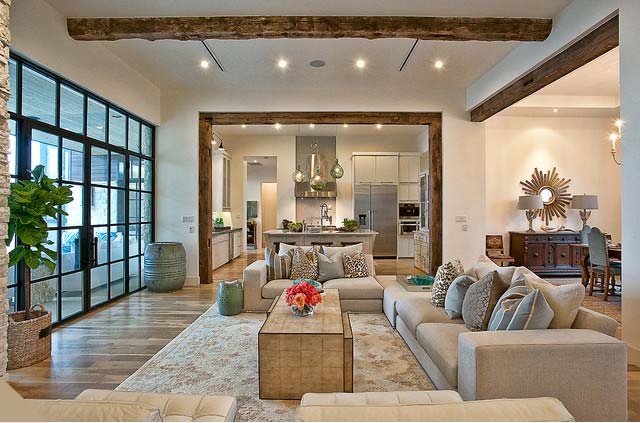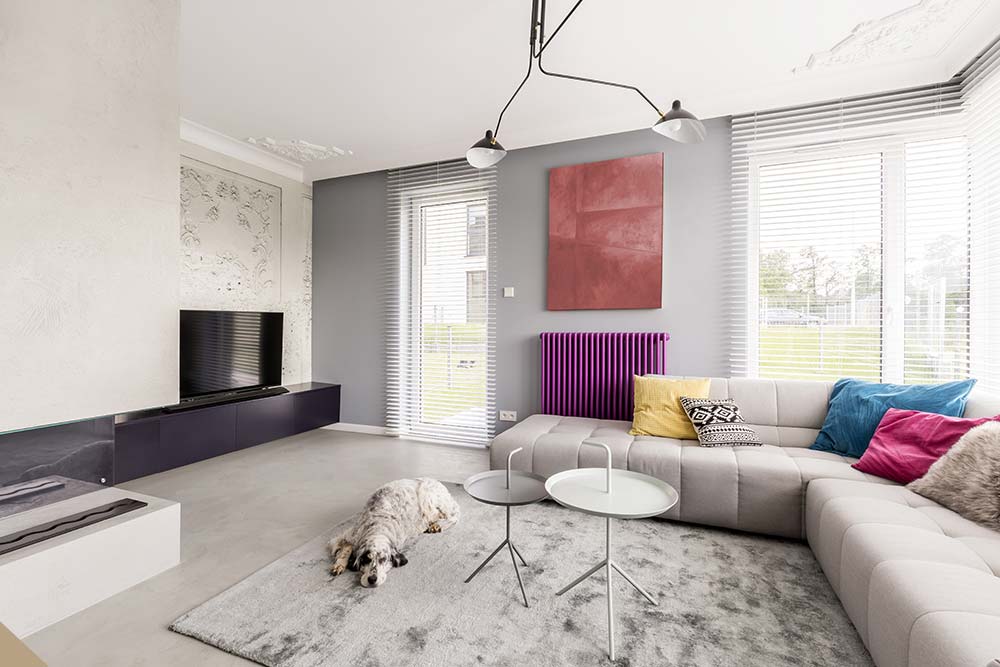Guide
Tips to Help You Arrange Furniture in Living Room
Arranging furniture can be a difficult design decision, but the arrangement is critical to the comfort and function of a room. It doesn’t matter if your rooms are big or small, the right arrangement of furniture will make them more appealing. The options for placing furniture in the living room are almost interminable.
The best way to position your sofas, chairs, accent tables, etc usually depends on the shape and use of your room. Find an arrangement that suits your space from the room layout ideas below. Knowing how to arrange furniture can help you determine how the room will be used. It will also help you make important decisions about the size and scale of large pieces and whether the room will feel spacious or cramped.
Flexible Living Room Furniture Arrangements
In a flexible living space, you should choose furniture carefully. Give yourself the flexibility to change your living room furniture arrangement to suit the occasion. Fill an empty corner with a lightweight chair that can easily be pulled into a seating area when needed. Add in pieces like ottomans or stools that can serve as side tables for drinks and seating for guests.
In a flexible living space, you should choose furniture carefully, and be smart with a sofa that easily converts into a bed without compromising on style. Meanwhile, hidden storage pieces like our Hilton bed are perfect for hiding pillows, duvet covers, and dust ruffles when not needed.
Small Living Room Layouts

As more of us work at home, the small living room now has to fulfill different roles. Contrary to popular belief, pushing all of your belongings against the walls is not the best approach as arranging furniture in a small room looks awkward. It creates an awkward space in the middle and accentuates the narrow dimensions of the room. Instead, arrange the furniture in the middle so that the room feels open. Some stylish slipper chairs or a comfortable loveseat paired with footstools or ottomans that can double as seating, storage, or side tables will be more valuable than a pair of bulky sofas.
Large Living Room Layout Ideas

It is important to divide space according to function and give meaning to all areas. Strategic furniture placement can make long or large living rooms feel especially cozy. A commonly used technique for decorating a large room is to create two conversation groups with a passage between them this is because it’s almost impossible to fill any large space with one. Creating two furniture arrangements provides a lot of extra seating, allows a living room to be used for multiple functions, sometimes simultaneously, and avoids the risk of dead space or those awkward empty corners of the room. If you have a window that overlooks a garden, this can be a great place to sit comfortably with a footstool or a small writing desk.
Arrange Living Room Furniture for Conversation

If your living room is often used for socializing with family and friends, arrange the furniture in a way that facilitates conversation. Choose the furniture layout carefully and arrange it in such a way that there is space for interaction between the two groups so that there is a comfortable feeling and both groups can sit face to face and talk. Pull the seating pieces closer to the center of the room and place them so that they face each other. Place a coffee table in the middle so that drinks can easily reach both sides.
Symmetrical Living Room Furniture Arrangement

Symmetry emphasizes a sense of order in living rooms. When arranging living room furniture, don’t forget to leave space for traffic and entry. For a parallel arrangement, place key seating pieces near the fireplace and place them facing each other. To get the right balance, try arranging similar sofas or chairs opposite each other. Use an end table as a landing space at either end of the sofa. Add chairs to balance the sofa’s visual weight and maximize seating. Even if your furniture pieces don’t exactly match, you can still achieve a symmetrical look by arranging pieces with similar proportions on either side of the room. The living room furniture arrangement provides ample space for guests to visit.
Focus on the View
An effective living room arrangement starts with a centerpiece, which serves as the foundation of your design. Orient the main seat piece to the focal point and arrange the secondary seat pieces around the centerpiece. In the summer the room can be rearranged so that the view outside the door is easily seen. When arranging furniture in a long, narrow space, orient the pieces toward the window to maximize the view.
L-Shaped Living Room Layout Ideas

The L-shaped living room is a common feature in homes across the country, and if you have one, you already know that it can be a difficult room to decorate. Place a couch around a large coffee table to create an L-shaped arrangement. In the corner where the two pieces meet, fill the space with an end table or table lamp. A single chair on the other side of the group can easily be moved closer to the conversation. Add a desk or dressing table, chair, and mirror in front of the door. Such an arrangement is considered practical and more traditionally inclined.
Living Room Layout Ideas for Chairs

Move the furniture away from the walls and make room for an awkward or small room to breathe. Four comfortable chairs can work even in a small room if you don’t have room for the usual sofas or loveseats. Try laying out an area rug and place a chair in each corner. If you have a front or formal living room that is used primarily for entertaining, this arrangement creates a sophisticated, minimal conversation area with two pairs of matching armchairs in the middle and a long narrow table facing each other.
Go for an Entirely Bespoke Living Room Layout
If you’re lucky enough to create a modern living room scrap, you’ll have a lot of flexibility in terms of layout and design of the living room but it’s also possible to change the existing interior. Floor-to-ceiling shelving housing bunks, beautiful books, curios, and artwork give a fashionable look and can perhaps be successfully paired with an oversized living room fireplace to anchor the space.
Provide a Walk Through Space
In an open-plan living room with a kitchen, dining area, or home office, you’ll want to work with your interior designer to achieve a logical flow in the space. Organizing an open-plan living room into separate zones is a popular technique that can help maintain order in a family’s living room. Aim to establish the same materials, shapes, and colors throughout the space to visually unify the room. A garden path that passes in front of the TV or dining area will quickly prove unpopular, as will any layout that interferes with someone working from home.
